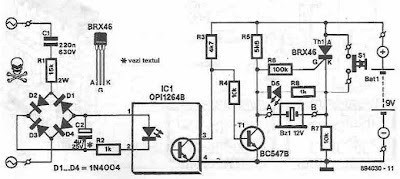Simple 8 Channel DTMF Link Encoder

Generated millions of times every day by our telephone keypads, the eight DTMF frequencies were chosen so that the harmonics and intermodulation do not generate significant in-band signal levels. The signal is encoded as a pair of sine waves, ensuring that no frequency is a multiple of the other and the sum and difference between two frequencies does not match any single tone and that’s why DTMF sounds so ugly!T he DTMF encoder circuit show n here is based on the HT9200B tone generator device produced by Holtek and distributed by Futurlec among others. The encoder is complemented by a decoder elsew her e in this publication. 8-Channel DTMF : Encoder Schematic The HT2900B is supplied as a nice old fashioned 14-pin device. It can be instructed by a microcontroller to generate 16 dual tones and (in serial mode only) 8 single tones from the DTMF pin output . It s 8 - pin ‘ younger brother’ the HT9200A provides a serial mode only whereas the HT9200B contains a select-able serial/parall...




















